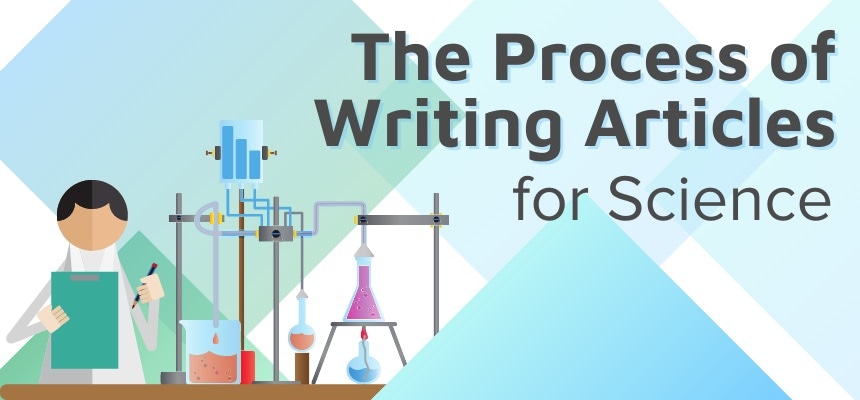
The impact of any scientific finding is largely dictated by the way in which the data is written in peer-reviewed journals, as well as how these findings are relayed to the general public by scientific journalists.
In fact, most graduate students, particularly in the United States, are encouraged to publish meaningful scientific findings early on, as their future careers as professional scientists are largely evaluated by the quantity and quality of articles that they have published. Despite the significance that writing has in the scientific process, it is often taught secondarily to scientific concepts.
Speaking to the audience
Scientific writing differs significantly in both its format and structure when compared to writing for other disciplines such as English, history, or social sciences. To this end, scientific writing is a reflection of the scientific inquiry; therefore, the same precision that is demanded during the research process must also be reflected in its written form.
Discover your Audience
The scientific writer is often communicating highly technical information to an audience that may, or may not, be familiar with these topics. Therefore, it is important for the scientific writer to begin any paper or article with general background information on the topic.
For the purposes of this blog post, imagine that you have been assigned to write an article on why remdesivir has been successful in the treatment of the novel coronavirus disease 2019 (COVID-19).
Some questions that you, the scientific writer, should answer in this initial segment of your article include:
- What is COVID-19?
- How many people have been affected by COVID-19?
- Why is it important to treat COVID-19?
- Are there any treatments currently available/approved for the treatment of COVID-19?
Once this background information is provided to the reader, the scientific writer can then use one or two sentences to briefly introduce remdesivir into the article. These sentences are particularly important, as the reader will generally decide whether to proceed reading the article or move on to another website after reading this sentence; therefore, it is crucial to create a sentence that is not only accurate but pulls the reader in to want to learn more.
>>>Read More - Marketing Science Behind Blogging: How to Write Scientific Blog Posts<<<
The body of the article
After the introduction, there are several paragraphs within the article that will typically be used to provide the details on the topic and their significance to the reader. In general, each paragraph should include one topic sentence, with the remaining sentences in the paragraph supporting or elaborating on that topic sentence.
Furthermore, all of the paragraphs within the article should be organized around section headings and/or sub-headings as appropriate.

By breaking up the article into these organized sections, the reader has an easier time reading through a lengthy article that does not necessarily appear to be so long.
In addition to incorporating these aspects into any scientific blog post or article, it is important for scientific writers to also use effective transitions between sentences, paragraphs, and sections. Engaging transitions should also be used within sentences to ensure that the entire article flows together well.
Consider the following sentences discussing the biological functions of deoxyribonucleic acid (DNA):
DNA is vital for all living beings – even plants. It is important for inheritance, coding for proteins and the genetic instruction guide for life and its processes. DNA holds the instructions for an organism's or each cell’s development and reproduction and ultimately death.
Although the information provided in these sentences is clear and accurate, the sentences seem ‘choppy’ and do not flow together well. This abrupt wording could cause the reader to lose interest and/or feel bored while reading the article. Now, consider how possibly rewording those sentences could dramatically change how this information is shared to the reader:
DNA is essential for maintaining the life of all organisms. DNA contains the genetic information that allows for the inheritance of genes, coding of proteins, and many other biological processes. Taken together, DNA provides the genetic instruction guide for life, beginning with the development of each cell, their reproduction, and, ultimately, their death.
While the information that is discussed in these two paragraphs remain the same, the way in which they are written and shared to the reader differ considerably. By getting creative with the way in which scientific information is discussed, the writer is able to engage the reader who may not have otherwise been interested in the subject at hand.
>>>Read More: Managing a Life Science Content Hub<<<
Conclusion
Are you interested in learning more about writing for science? Our latest webinar looks at writing and managing a successful science blog.
Join this session by clicking the link below.
References
- Turbek, S. P., Chock, T. M., Donahue, K., et al. (2016). Scientific Writing Made Easy: A Step-by-Step Guide to Undergraduate Writing in the Biological Sciences. The Bulletin of the Ecological Society of America 97(4); 417-426. doi:10.1002/bes2.1258.
- The Basics of Scientific Writing [Online]. Available from: https://www.unl.edu/gradstudies/connections/scientific-writing.